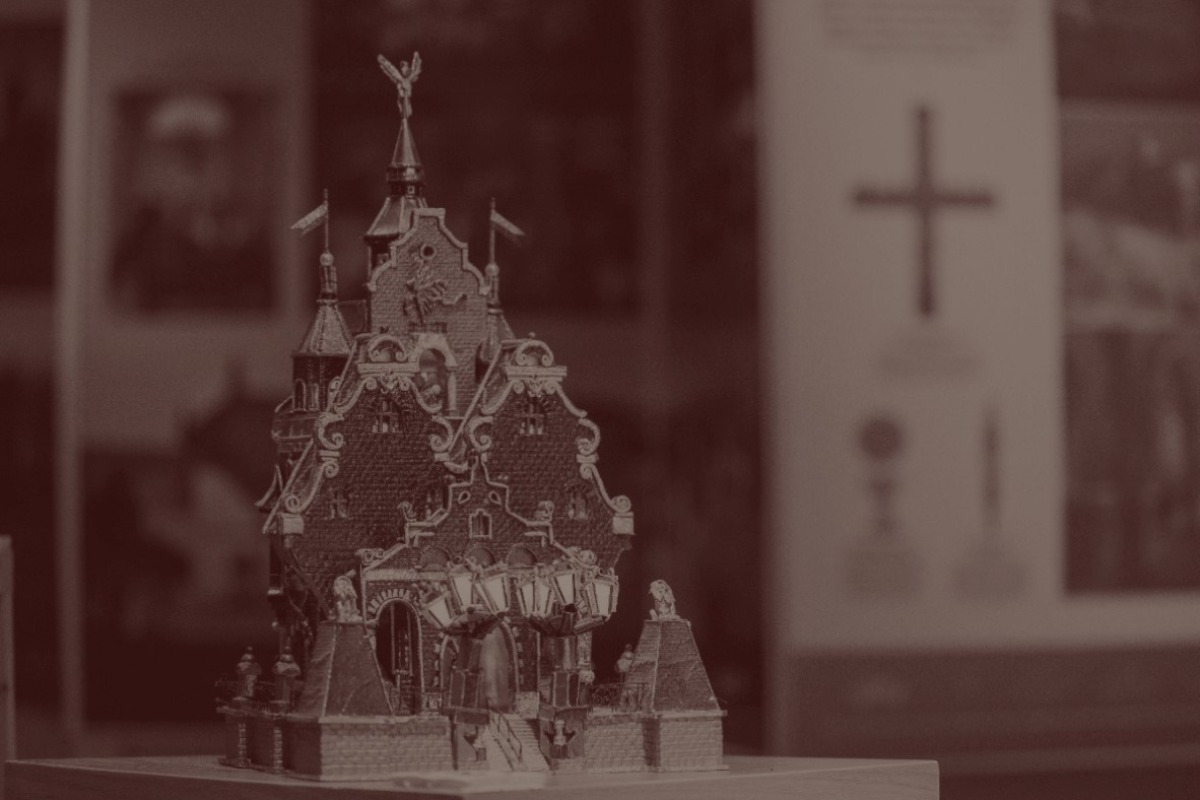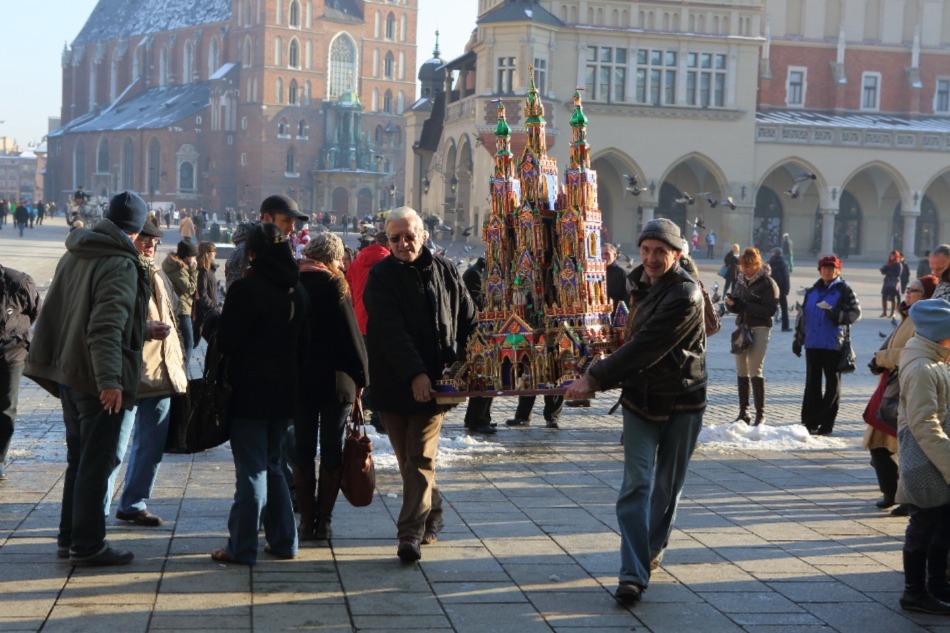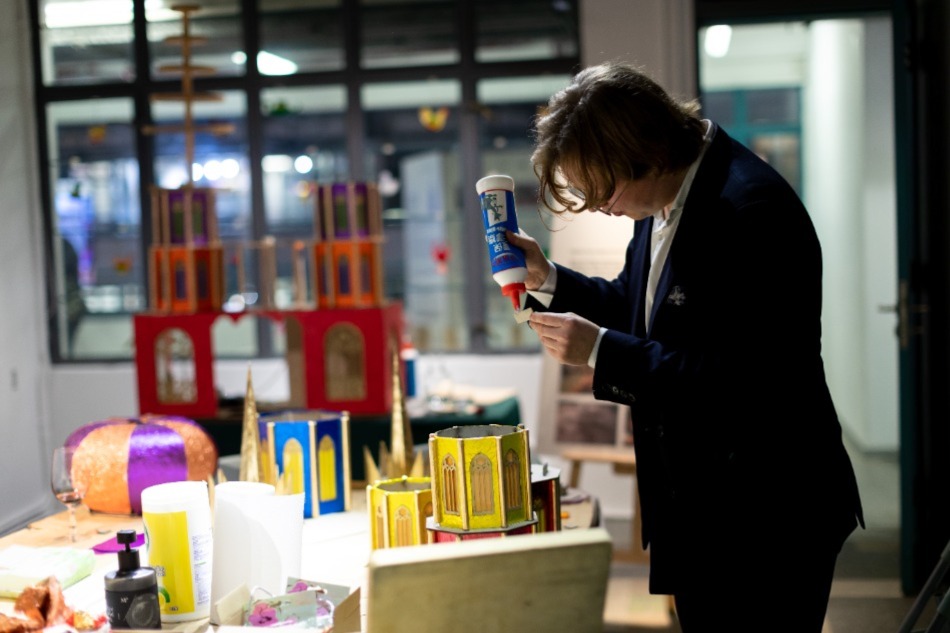PMQ Corner #46
Szopka:Showcasing a City’s Past, Present and Future
Nativity Scene - Szopka Tradition in Kraków

Written by Joan Yiu
Translated by Wendy
Photos by Lok Tso & Online image
Have you ever heard of Szopka? Searching it online - the common answer would be Polish traditional culture, which was listed on the UNESCO Representative List of Intangible Cultural Heritage of Humanity in 2018. Taking a closer look, you may see miniature architectural models that look like historical buildings in the city. Right in the middle of the building, there must be nativity scenes, for the reason that Szopka means crib in Polish, commemorating the birth of Jesus.


80 Years of Mania
Models of nativity scenes are not unique in Poland. Ever since the nineteenth century, it was being circulated in Europe. Szopka in Poland is said to have originated from the cold winter - when carpenters and rooftop workers found building work impossible under severe weather, they eventually made use of the existing materials to make models of nativity scenes. The models at that time were mainly made of wood, divided into two or three layers, with towers and Baroque domes, most of which were made with reference to local buildings. On the second floor, there must be a nativity scene. Some models have a particularly wide bottom layer. As a mini theater, Szopka was used to entertain children, in the times without television.

By Filip Fotomajczyk - 3rd place in the 78th Krakow Nativity Scene Competition in the category of Miniature Nativity Scenes.


By Filip Fotomajczyk - won two prizes at the 74th Krakow Nativity Scenes Competition, 3rd in the category of small nativity scenes and a special award named after Dobrzycki, creator of the nativity scene competition.
Szopka was not just a traditional Christmas virtue. The Poles regard it as a competition, which was started in 1937. On the first Thursday of December every year, Kraków Nativity Scenes Contest (Konkurs Krakowskich Szopek) is held in the central square of Kraków, Poland. The contest was suspended due to the Nazi Occupation, then it was resumed in 1945. Even in 2020 with a severe epidemic, the competition was not put on hold but changed to online format.


A large, 70cm tall Szopka takes six months upon completion. The miniature Szopka, which is only 15cm high, takes at least 2 months. As a matter of fact, szopka takes time to make - its working process has been becoming more and more delicate. In addition to using lighter cardboard, pasting colored foil paper for decoration, there are even different small tricks that can light up Szopka.
Why are Poles so obsessed with Szopka? Over the past eighteen years, Filip Fotomajczyk, who has won seventeen Kraków Nativity Scenes Contest, explained: "It shows a city's history, architecture, mythology, and problematic issues in modern society." Take his work as example, you can see the mythical heroes a thousand of years ago; there’s modern rainbow colors, speaking out for the issue of gender equality.

Why are Poles so obsessed with Szopka? Over the past eighteen years, Filip Fotomajczyk, who has won seventeen Kraków Nativity Scenes Contest, explained: "It shows a city's history, architecture, mythology, and problematic issues in modern society."


Take his work as example, you can see the mythical heroes a thousand of years ago; there’s modern rainbow colors, speaking out for the issue of gender equality.
Szopka Master at the age of 31
At only 31 years old, he is called a master because Filip has a 17-game winning streak and is now a co-organizer of the contest. However, Filip has no tradition of making Szopka in his family, and he has not received any training in model making since he was in music school. He would have missed Szopka, but luckily his aunt works in a museum in Kraków. "She has participated in many Szopka exhibitions, and listening to her talk about related history, architecture, and mythology gave me a lot of beautiful imaginations." At the age of 12, he began to study and immerse himself in making, as a way to relax. He participated in the competition for the first time at the age of 14 and won for the first time in the second year.


Mr. Filip Fotomajczyk
Winning the award is not an easy task, because there are about 100 to 150 entries each year, which are divided into children, youth and adult categories, and some are grouped by model size. However, Filip said that there may be only 20 entries that are of high quality. "Failures may be due to unbalanced proportions, crooked horizontal lines, and insufficient workmanship." Therefore, there are only 14 or 15 people in Poland who can be called masters. And he is the youngest one. He said: "The oldest one has participated in more than 60 sessions. He is now in his 80s and is still working hard on Szopka production."

By Filip Fotomajczyk - won the main prize at the 66th Krakow Nativity Scene Competition in the youth category.
Filip explained that the model seems simple, but there are many rules behind it. Moreover, it is all handmade, involving many skills and processes, and it takes a lot of time to make. Although the completed or award-winning works are valuable and marketable, they are far beyond the limit of making money and therefore can only be regarded as part-time jobs. So Filip only makes one work a year and regards it as a personal interest. In the rest of the time, apart from music-related work, he is also a local tour guide recognized by the government. "Like Szopka, it is also used to show my favorite city. I would like to introduce tourists to the city's attractions related to the birth of Jesus." This year, he did not participate in the competition because he was responsible for making works placed in the city. The rainbow-hued Szopka would later become his new attraction to introduce Krakow to tourists.
The Future of Tradition
He has just completed his first overseas exhibition and workshop in Hong Kong, and he hopes to have the opportunity to travel to different countries in the future, so that more people can get to know Szopka. In Poland, although Szopka was listed as a world cultural heritage in 2018, it seems that it is difficult to attract more people to participate in such a waste of time and mind.



In order to change the situation, he applied to the Krakow Museum three years ago to organize master classes for young people. In the classes, Filip discusses with them how to make it, teaches them techniques, and provides needed materials. "Sometimes I tell them stories about the history and architecture of the city, and I think they also start planning for the future, putting their favorite buildings and issues of concern among them."
In the past competition, this group of teenagers have won in the contest. Filip said excitedly: "Winning an award will make them more motivated. I believe this tradition will be passed down, because we are supporting young people."




Awarded Szopka by Filip's students
Nativity Scene - Szopka Tradition in Kraków
Time:12.13 - 12.29 (11am-7pm)
Venue:H506-507, Block B, PMQ
More info:https://bit.ly/HKszopka


